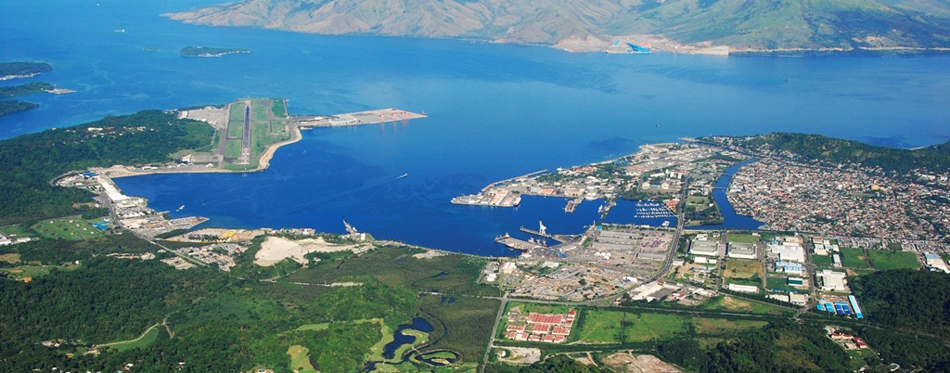The Rich History of Subnet Services ROV Training Location
SubNet Services conducts its remotely operated vehicle (ROV training) in Subic Bay (Zambales, Philippines) because of its ideal training conditions all year-round. Subic is one of the special economic zones in the country and a top tourist destination for its water sports tourism and nature-related activities. But did you know that like the Philippines, Subic also has a long, significant history? Read on to know more.
Subic Bay During the Pleistocene Period
The Negritos or Aetas were the early inhabitants of Subic. However, the first migrants to reach Zambales were the Malay seafarers who later drove the Negrito aborigines to the mountains. History has known these Negritos as the Negritos of Zambales.
Subic Bay During the Spanish Era
The Spaniards first discovered Subic in 1572 through Juan de Salcedo, grandson of Miguel Lopez de Legaspi. He was collecting taxes for King Philip II. He later founded the first Spanish settlement in the Philippines.
In 1607, an Augustinian friar named Rodrigo de San Miguel founded the town of Subic. At that time, the Spaniards were Christianizing the Negritos of Zambales. Nevertheless, they resisted. More than 200 years passed by before Spain once again took notice of Subic.
In 1868, Cavite (where the military base of Spain was located) suffered from rampant diseases like malaria. Its shallow waters were also dangerous during bad weather. Thus, the Spaniards sent a military expedition to explore Subic Bay and have it as a possible replacement for their base in Cavite. However, they only sent their plan to the King of Spain in 1884. King Alfonso II nonetheless issued a Royal Decree in the same year declaring Subic Bay as a naval port.
More than a decade later, the Spanish-American War broke out in April 1898. This caught the Spaniards unprepared and unable to defend its navy in Subic Bay. Emilio Aguinaldo then agreed with the US authorities to help them in their war against Spain (which they won). Finally on June 12, 1898, Aguinaldo proclaimed the Philippines’ independence from more than 300 years of Spanish rule.
Subic Bay During the American Regime
However, the Spanish-American War did not end yet in June. It only officially ended on December 10, 1898 with the signing of the Treaty of Paris. As agreed, the US paid Spain $20 million dollars for the possession of the Philippines. This ultimately resulted to the so-called Bolo Wars throughout the country. Insurgent forces then took control of the Subic Bay.
The Americans only returned to Subic on December 9, 1899. Their mission was to clear the area of insurgents and take control of the naval base. In March 1900, the situation finally stabilized. Gradually, numbers of US marines in Subic increased.
In 1901, the US Navy designated Subic Bay as a repair and supply naval base site. Two years later, US President Theodore Roosevelt issued an executive order wherein nearly 50% of Subic’s original land area became an American military reservation. In 1904, Subic Naval Station finally became operational.
Subic Bay During World War I and II
The Subic Bay Naval Reserve saw limited usage during World War I. Moreover, the 1922 Washington Treaty affected the American base at Subic, which was reduced to an inactive facility. Events leading to the World War II also saw some changes at Subic Bay. Still, it was only considered a secondary site.
Subic Bay During the Japanese Occupation
During the Japanese occupation from 1942 to 1945, Subic served as a monitoring and defense facility of the Japanese Imperial Army until the end of World War II. However on January 29, 1945, as many as 40,000 American troops landed in Zambales. These troops advanced through Subic Bay to regain control of the base.
Subic Bay During the Post-Colonial Period
The Philippines became fully independent from the American rule on July 4, 1946. Nevertheless, Olongapo (formerly a barrio of Subic and part of the US Military Reservation) remained under the control of the Americans. They only turned it over to the Philippines on December 7, 1959. By virtue of Executive Order No. 366 issued by President Carlos P. Garcia, Olongapo finally became a municipality. As a result, Subic’s population was reduced by more than half – from 25,233 to 12,985 in 1948 and 1960, respectively.
In 1991 (the year that the cataclysmic eruption of Mt. Pinatubo took place), the 1947 US-Philippines Military Bases Agreement expired. Likewise, the Philippine Senate rejected its renewal. Then on March 13, 1992, President Corazon Aquino approved RA 7227. Known as the Bases Conversion and Development Act of 1992, RA 7227 created the Subic Bay Metropolitan Authority (SBMA) to promote and develop the Subic Special Economic Zone.
The US Navy, on the other hand, turned over Subic Naval Base to the Philippine government in September. They finally left the base on November 24, 1992, ending more than 90 years of American military presence in the Philippines.
Subic Bay Today
In 2015, SBMA registered its fourth record-breaking year, as it posted new highs in its 23-year history. These included “Highest Gross Revenues” of PhP2.75 billion, “Highest Operating Income” (EBITDA) of PhP1.48 billion, and “Highest Net Income” of PhP841 million. It also bagged its first major global awards for Subic Bay Freeport as Free Zone of the Year 2015 in Asia and also as Free Zone of the Year 2015 in the sub-regions of South and Southeast Asia.
In addition, the Department of Tourism named Subic Bay Freeport as Region III’s most visited tourist destination for the second time in a row. Similarly, leading global search engine Google named Subic Bay Freeport as among the 10 most popular trending search terms for Philippine vacation destinations in 2015.
Far from its history, Subic is no longer occupied by the Spanish, the Japanese, nor the Americans today. Filipinos now own it just like the freedom that they first earned exactly 119 years ago. A freedom that their ancestors fought hard to gain and hopefully, a freedom that Filipinos today will fight hard to keep.
Indeed, a rich and prolific history worth celebrating today. Happy Independence Day, Philippines!
Subic Bay as SubNet Services ROV Training Location
SubNet Services has chosen Subic Bay to be its ROV training location. It is the perfect place not only to explore historical underwater sites using ROV, but also for SubNet students to enjoy and relax after their training. With many recreational activities nearby, they can learn to scuba, dive in some of Subic’s great wrecks, trek the jungle, hire a jet ski, and do many other water activities.
Subic Bay, as a training location, certainly offers a more rewarding ROV training experience than elsewhere.
Interested in getting into the ROV industry? Contact or Email us NOW.
Be trained and internationally certified! Only here at SubNet Services.
Sources:
http://subic.gov.ph
http://www.sbma.com
http://www.history.com
http://www.subicbaypi.com
http://www.visitmyphilippines.com
http://www.suayan.com/kyo/work/subic/



